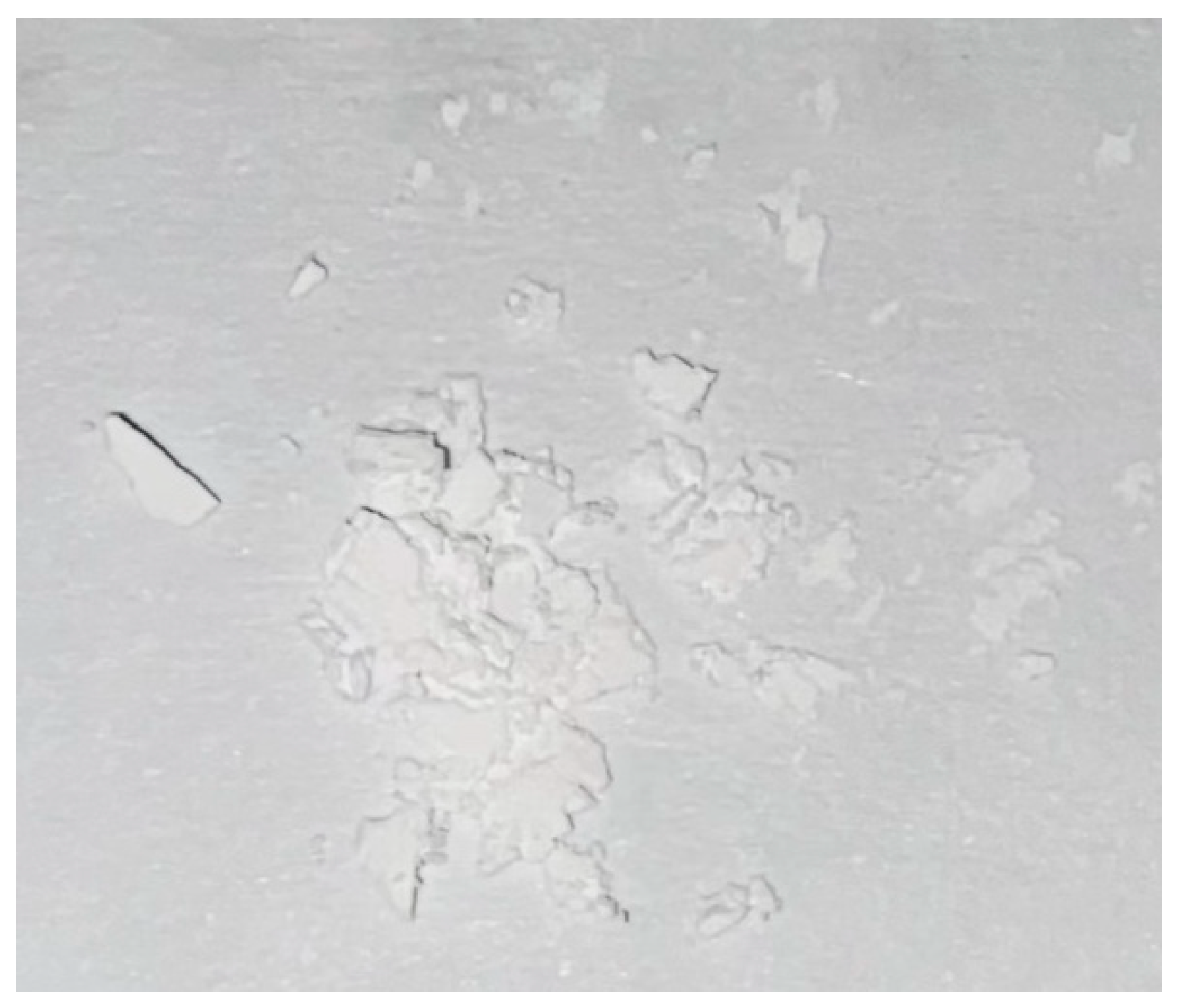Synthesis of Good Electrical Conductivity of
Abstract
:1. Introduction
2. Experimental
2.1. Synthesis of CoCe-BTC
2.2. Fabrication of Gas Sensor
2.3. Material Characterizations
2.4. Gas Sensitivity Test Systems
3. Results and Discussion
3.1. Structure Characterization
3.2. Repeatability of Sensors
3.3. Dynamic Response to Different Concentrations of NO2
3.4. Selectivity of Sensors
4. Conclusions
Author Contributions
Funding
Institutional Review Board Statement
Informed Consent Statement
Data Availability Statement
Conflicts of Interest
References
- Yang, H.; He, X.; Wang, F.; Kang, Y.; Zhang, J. Doping copper into ZIF-67 for enhancing gas uptake capacity and visible-light-driven photocatalytic degradation of organic dye. Mater. Chem. 2012, 22, 21849–21851. [Google Scholar] [CrossRef]
- Dmello, M.E.; Sundaram, N.G.; Singh, A.; Singh, A.K.; Kalidindi, S.N. An amine functionalized zirconium metal-organic framework as an effective chemiresistive sensor for acidic gases. Chem. Commun. 2019, 55, 349–352. [Google Scholar] [CrossRef] [PubMed]
- Wang, Y.; Zhang, W.; Wu, X.; Luo, C.; Wang, Q.; Li, J.; Hu, L. Conducting polymer coated metal-organic framework nanoparticles: Facile synthesis and enhanced electromagnetic absorption properties. Synth. Met. 2017, 228, 18–24. [Google Scholar] [CrossRef]
- Wang, Y.; Wang, L.; Huang, W.; Zhang, T.; Hu, X.; Perman, J.A.; Ma, S. A metal organic framework and conducting polymer based electrochemical sensor for high performance cadmium ion detection. J. Mater. Chem. A 2017, 5, 8385–8393. [Google Scholar] [CrossRef]
- Huang, T.; Kung, C.; Liao, Y.; Kao, S.Y.; Cheng, M.; Chang, T.H.; Henzie, J.; Alamri, H.R.; Alothman, Z.A.; Yamauchi, Y.; et al. Enhanced charge collection in MOF-525-PEDOT nanotube composites enable highly sensitive biosensing. Adv. Sci. 2017, 4, 1700261–1700267. [Google Scholar] [CrossRef] [PubMed]
- Yao, M.; Lv, X.; Fu, Z.; Li, W.H.; Deng, W.H.; Wu, G.D.; Xu, G. Layer-by-layer assembled conductive MOF nanofilms for room temperature chemiresistive sensing. Angew. Chem. Int. Ed. 2017, 129, 16737–16741. [Google Scholar] [CrossRef]
- Campbell, M.G.; Liu, S.F.; Swager, T.M.; Dincă, M. Chemiresistive sensor arrays from conductive 2D metal-organic frameworks. J. Am. Chem. Soc. 2015, 137, 13780–13783. [Google Scholar] [CrossRef] [PubMed]
- Verma, G.; Kumar, S.; Pham, T.; Niu, Z.; Wojtas, L.; Perman, J.A.; Chen, Y.S.; Ma, S. Partially interpenetrated NbO topology metal-organic framework exhibiting selective gas adsorption. Cryst. Growth Des. 2017, 17, 2711–2717. [Google Scholar] [CrossRef]
- Hu, J.; Yu, H.; Dai, W.; Yan, X.; Hu, X.; Huang, H. Enhanced adsorptive removal of hazardous anionic dye Congo red by a Ni/Cu mixed-component metal-organic porous material. RSC Adv. 2014, 4, 35124–35130. [Google Scholar] [CrossRef]
- Wang, T.; Li, X.; Dai, W.; Fang, Y.; Huang, H. Enhanced adsorption of dibenzothiophene with zinc/copper-based metal-organic frameworks. J. Mater. Chem. A 2015, 3, 21044–21050. [Google Scholar] [CrossRef]
- Zhao, G.; Liu, Q.; Tian, N.; Yu, L.; Dai, W. Highly efficient benzothiophene capture with a metal-modified copper-1,3,5-benzenetricarboxylic acid adsorbent. Energy Fuels 2018, 32, 6763–6769. [Google Scholar] [CrossRef]
- Wang, T.; Fang, Y.; Dai, W.; Hu, L.; Ma, N.; Yu, L. The remarkable adsorption capacity of zinc/nickel/copper-based metal-organic frameworks for thiophenic sulfurs. RSC Adv. 2016, 6, 105827–105832. [Google Scholar] [CrossRef]
- Dong, S.; Li, Z.; Fu, Y.; Zhang, G.; Zhang, D.; Tong, M.; Huang, T. Bimetal-organic framework Cu-Ni-BTC and its derivative CuO@NiO: Construction of three environmental small-molecule electrochemical sensors. J. Electroanal. Chem. 2019, 858, 113785. [Google Scholar] [CrossRef]
- Elaf, A.A.E.; Selin, S.; Sahika, S.B. Preparation of CeO2 nanofibers derived from Ce-BTC metal-organic frameworks and its application on pesticide adsorption. J. Mol. Liq. 2018, 255, 10–17. [Google Scholar]
- Geng, B.; Yan, F.; Zhang, X.; He, Y.; Zhu, C.; Chou, S.L.; Zhang, X.; Chen, Y. Conductive CuCo-based bimetal organic framework for efficient hydrogen evolution. Adv. Mater. 2021, 33, 2106781. [Google Scholar] [CrossRef] [PubMed]
- Xu, J.; Yu, Y.; He, X.; Sun, J.; Liu, F.; Lu, G. Synthesis of hier- archical ZnO orientation-ordered film by chemical bath deposition and its gas sensing properties. Materal Lett. 2012, 81, 145–147. [Google Scholar] [CrossRef]
- Gu, F.; Nie, R.; Han, D.; Wang, Z. In2O3–graphene nanocomposite based gas sensor for selective detection of NO2 at room temperature. Sens. Actuators B Chem. 2015, 219, 94–99. [Google Scholar] [CrossRef]
- Zhou, Y.; Zou, C.; Lin, X.; Guo, Y. UV light activated NO2 gas sensing based on Au nanoparticles decorated few-layer MoS2 thin film at room temperature. Appl. Phys. Lett. 2018, 113, 082103. [Google Scholar] [CrossRef]
- Zhang, D.; Jiang, C.; Wu, J. Layer-by-layer assembled In2O3 nanocubes/flower- like MoS2 nanofilm for room temperature formaldehyde sensing. Sens. Actuators B Chem. 2018, 273, 176–184. [Google Scholar] [CrossRef]
- Dong, F.; Han, W.; Guo, Y.; Han, W.; Tang, Z. CeCoOx-MNS catalyst derived from three-dimensional mesh nanosheet Co-based metal–organic frameworks for highly efficient catalytic combustion of VOCs. Chem. Eng. J. 2020, 405, 126948. [Google Scholar] [CrossRef]












| Materials | Gas Concentration (ppm) | Response | Response Time (s) | Recovery Time (s) | References |
|---|---|---|---|---|---|
| ZnO nanorods | 1 | 1.6 a | - | - | [16] |
| In2O3/rGO | 30 | 8.25 a | 240 | 1440 | [17] |
| MoS2-Au | 2.5 | 0.30 b | 240 | 840 | [18] |
| In2O3/MoS2 | 30 | 0.17 b | - | - | [19] |
| PEDOT | 50 | 0.18 b | 322 | 896 | This work |
| CeCo-BTC/PEDOT | 50 | 0.22 b | 299 | 847 | This work |
Publisher’s Note: MDPI stays neutral with regard to jurisdictional claims in published maps and institutional affiliations. |
© 2022 by the authors. Licensee MDPI, Basel, Switzerland. This article is an open access article distributed under the terms and conditions of the Creative Commons Attribution (CC BY) license (https://creativecommons.org/licenses/by/4.0/).
Share and Cite
Zha, X.; Xi, R.; Wu, Y.; Xu, J.; Yang, Y.
Synthesis of Good Electrical Conductivity of
Zha X, Xi R, Wu Y, Xu J, Yang Y.
Synthesis of Good Electrical Conductivity of
Zha, Xiaoting, Runhui Xi, Yuanyuan Wu, Jianhua Xu, and Yajie Yang.
2022. "Synthesis of Good Electrical Conductivity of




